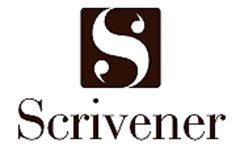
At the top of my list of useful resources for writers is Scrivener, which is a text editor and a personal information manager. You can use it to write a novel, a film script, a dissertation, a paper or an article, a blog …
On your computer screen Scrivener has three parts (you can hide the sidebars). To the left is the Binder, which is a list of your chapters or sections. To the right is the Inspector, where you can write a synopsis, make document notes, add links to useful websites, etc. You can also track the status of your manuscript in the Inspector.
The central part is where you write your text when you are in one of the chapters or sections of the binder. The central part can also serve as a corkboard with index cards, one for each section of your text. You can move the cards around by dragging and dropping and so rearrange your text. This means that you have a clear overview all the time and you can add or delete ideas as you wish.
You do not have to worry about forgetting to save your text. Whenever you stop writing, Scrivener saves the latest changes after two seconds of inactivity. You can also back up your text to, for example, iCloud or Dropbox.
Scrivener was created by Keith Blount, originally for Mac but there is also a Windows version. You can get the program here. It costs $45; students and academics pay $38.25. Upgrading from an earlier version is $25. One licence is valid for as many computers in your household as you like.
You can download a free trial version that you can use for 30 separate days – if you use it twice a week, it will last for fifteen weeks.

From Literature and Latte you can also get Scapple, a kind of mind-mapping tool for brainstorming. It is really versatile, and I could write a lot about it, but there is an instructive film on the company’s website, where Keith Blount shows how you can work with it. Scapple is for both Mac and Windows. A standard licence is $14.99; students and academics pay $12. For a free trial the same terms apply as those for Scrivener.

My third recommendation is Evernote. You create notebooks where you can write notes, add a screenshot of something you saw on the internet, store a photo or a voice recording, share content with others, etc. The basic version of Evernote is free; Evernote Premium costs SEK 65/month.
I want to stress that I am in no way affiliated with the above-mentioned firms and I do not get any money or other benefits for recommending these programs. They are my favourite programs; I couldn’t do without them. You should test them – they are really worth trying. You can find instructions and tips on how to use them on the internet.
Recent Comments